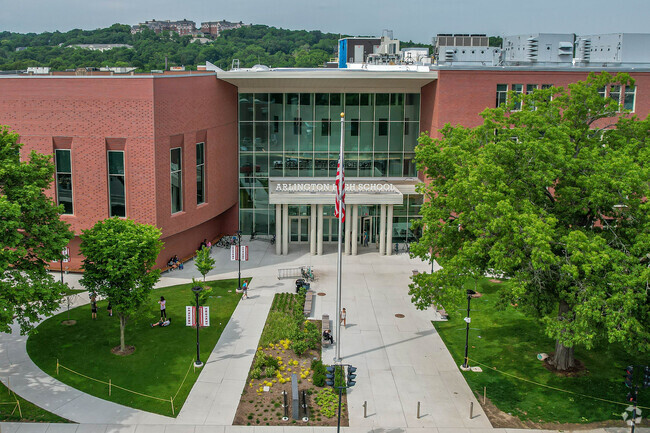Getting to Know Joe: A Closer Look at Our New President’s Past
February 2, 2021
On January 20th, millions of Americans tuned in to watch the inauguration of Joe Biden, our 46th president. Yet despite his growing fame, many people don’t know much about Biden’s life and career prior to the Obama administration where he served as vice president. A strong focus on criminal reform, outspoken integration stances, and personal tragedy have all come together to shape the man we call President today.
The Early Years
Joseph Robinette Biden Jr. was born in 1942. He spent the majority of his childhood in Scranton, Pennsylvania, later moving to Delaware at the age of ten. Biden obtained his bachelor’s degree from the University of Delaware in 1965 and studied law at Syracuse University in 1968. As a young man, Joe worked briefly as an attorney. However, he eventually gave up the profession for politics. He worked part-time as a professor at Widener University School of Law from 1991 to 2008, while simultaneously serving in the Senate.
Although he would later go on to become president, Biden’s political ambitions started small. From 1970-1972 Joe served on the New Castle County Council in Delaware. He won a Democratic Senate seat in 1972 and went on to be re-elected five times. It was not long after Biden won his Senate seat that tragedy struck. Neilia and Naomi Biden (Joe’s first wife and baby daughter, respectively) were killed in a car accident less than a month after Biden’s political victory. Joe himself was not in the car at the time of the crash. Beau and Hunter Biden (Biden’s sons) survived the accident but were hospitalized with severe injuries. Despite the circumstances, Biden decided to keep his newly-won Senate seat. The young senator was sworn into office in the hospital where his sons were undergoing treatment.
The Debate over Busing
In the 1970s and 1980s, federal legislators engaged in bitter debate over the topic of busing (an integration program where children of color are bussed into white schools). Many liberal lawmakers saw busing as a solution to segregation in schools, while many conservative lawmakers were opponents of the idea. Despite representing the liberal-leaning Democratic party in the 70s, Sen. Biden was a vocal opponent of busing. There were more effective ways to combat segregation, he argued, such as housing integration. Joe said that if Black children were forced into white schools, it would only create more animosity between the two races. Better to pour more resources into Black schools and let racial integration happen naturally, was his opinion. Biden’s anti-busing stance brought him closer to hard-core segregationist senators such as James Eastland and Jesse Helms. Mr. Biden went so far as to collaborate with some of these men on pieces of legislation that made it difficult for the federal government to mandate busing.
Despite his past anti-busing stances, it is important to note that Biden was never against integration as a whole. Rather, he was against busing as an integration strategy. Years later in the 2020 presidential campaign, Biden came under fire for his past anti-busing policies and relationships with segregationists.
Crime Legislation
The Comprehensive Crime Control Act of 1984 was born from a terrified leadership. In the 80s, instances of crack cocaine (the non-powder form of cocaine) usage were on the rise. Fearing a cocaine epidemic, Biden called a hearing where government leaders and other professionals discussed the effects of crack and powder cocaine on the public. After much discussion, those present at the hearing came to the conclusion that crack cocaine was more dangerous than powder cocaine. Under this assumption, lawmakers amended the 1984 Comprehensive Crime Control Act, raising the minimum sentence for people found with cocaine to five years in prison. Although this amendment seemed logical at first, disparities in its implications quickly became evident.
Under the new Crime Control amendment, a person caught with five grams of crack cocaine would be subject to the same five-year punishment as a person caught with 500 grams of powder cocaine. The extreme difference in minimum crack and powder cocaine sentencing amounts became known as the 1:100 sentencing disparity. Because crack cocaine is cheaper than powder cocaine, this new sentencing law disproportionately affected the Black community, a lower-income demographic which tended to buy more crack cocaine than powder cocaine.
In 2002, over 90% of people sentenced for carrying crack cocaine were Black. Less than two decades later, professionals discovered that crack and powder cocaine are nearly identical to each other in chemical makeup; neither form of cocaine is significantly more dangerous than the other. After this new conclusion was reached, the 1:100 sentencing disparity no longer made sense. In 2007, Biden called for the undoing of the 1:100 sentencing amendment, taking responsibility for his role in the faulty Comprehensive Crime Control addition.
In the 90s, Biden shifted his political focus to the issue of criminal reform. Criminals needed to be taken off the streets and prosecuted, said Joe, regardless of their circumstances. Biden responded similarly to the topic of criminal reform as he did to the topic of busing a decade earlier. Straying from the Democratic party’s liberal policies, the senator adopted more conservative ideas surrounding the issue. In keeping with his views, Biden helped draft and pass the Violent Crime Control and Criminal Reform Act of 1994, which called for more police, more prisons, and stricter punishment after prosecution.
In order to appease the Senate’s more liberal members, the bill also included some preemptive crime prevention measures. Included in the 1994 Criminal Reform Act was the Violence Against Women Act, widely considered to be one of Biden’s most significant pieces of legislation. The Violence Against Women Act provided support to female crime victims. Following the passage of the 1994 Violent Crime Control and Criminal Reform Act, incarceration of Black men in America rose from 23% to 32%. Although Biden’s act is not solely responsible for this increase, many analysts see a correlation between the passage of the Criminal Reform Act and the increased incarceration of African American men soon after. In the 90s, crime affected Black communities disproportionately. Through the passage of his Criminal Reform Act, Biden had hoped to create safer living environments for African Americans. Today, it is debated whether or not the Criminal Reform Act did end up benefiting the Black community.
The Obama-Biden Years
In the early 2000s, Biden centered much of his work in the Senate around foreign affairs. In 2008, he ran for president (despite a short-lived presidential campaign two decades earlier). Although his 2008 presidential campaign never gained momentum, Joe was nominated to be vice president by former President Barack Obama. The Obama-Biden platform won the 2008 election, and won re-election in 2012.
Obama and Biden took office during the Great Recession, the 2008-2009 economic crisis that devastated our nation’s economy. At that time, national unemployment had reached a staggering 8%, and decisive action was necessary. Biden spearheaded the 2009 Economic Crisis and Stimulus Bill, an 800 billion dollar stimulus package aimed at reversing the recession. The stimulus package provided tax cuts and unemployment aid, among other economic supports. The Obama-Biden stimulus bill was successful in ending the economic crisis, although some critics argue that the package was too little too late. While overseeing the bill’s implementation, Biden emphasized the importance of transparent and accountable stimulus package spending.
In 2015, Biden’s son Beau passed away from a brain tumor at the age of 46. A grieving Joe Biden announced he would not run for president in 2016 following the recent death of his son. Instead of seeking election in 2016, Biden poured energy into the Biden Foundation, a charity that he founded with his second wife Dr. Jill Biden. The Biden Foundation focused on increasing gay rights, improving college affordability, and decreasing violence against women. The foundation closed in 2019 once Biden entered the 2020 presidential race.
The Presidency
On April 18, 2019, Biden announced that he would be running for president in the 2020 elections. He ran on a platform of environmental sustainability, affordable healthcare, racial justice, and a swift COVID-19 response. After obtaining the Democratic nomination, Biden faced off in the 2020 election against incumbent Republican nominee Donald Trump. Biden’s presidential win was confirmed on January 6th, despite illegitimate claims of voter fraud on behalf of the opposition.
Less than two weeks into his term, Biden has started work on pandemic relief, a key issue that he promised to address while on the campaign trail. The President has called on the Department of Agriculture to provide families in need with generous food benefits. He has also called on the Department of Labor to protect the insurance of employees who are not attending work due to COVID-related risks. “We’re in a national emergency,” said Biden on January 22nd. “We need to act like we’re in a national emergency. […] We’ve got to move with everything we’ve got. We’ve got to do it together.”
From New Castle County councilman to President of the United States, Joseph R. Biden has climbed the ranks, claiming his position as our nation’s 46th leader. Amidst a time of national trial and deep divide, Biden would be wise to look back on his past, then steer our country towards a better future.









